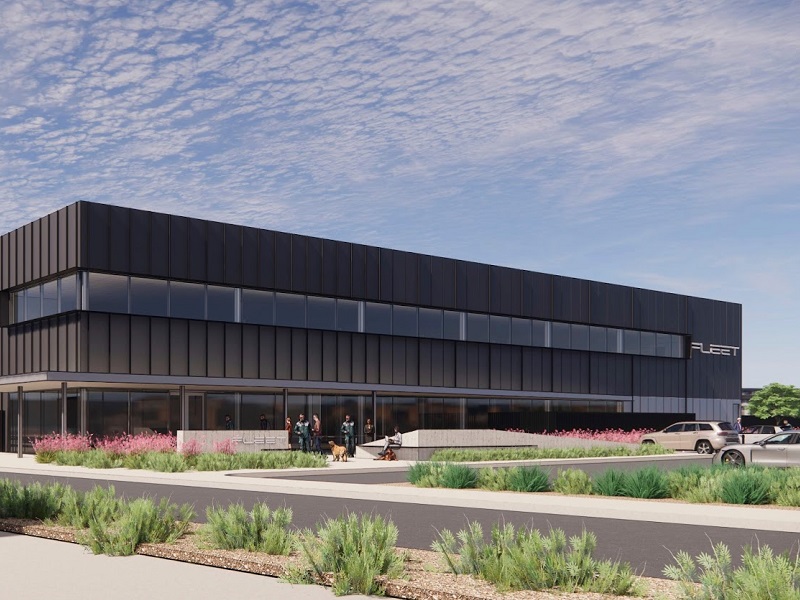Almost two years after Australian Space Park was shelved, Fleet Space Technologies will push ahead with plans to build a ‘hyper factory’ capable of scaling production of its cutting-edge technologies at Adelaide Airport.
The 5,300 square metre facility, which will double as the nanosatellite startup’s global headquarters, is expected to lift production output to thousands of patented smart sensors and hundreds of satellites each year.
It will also house an “exploration-focused AI supercomputer”, dubbed ExoCore, and serve as the central nervous system for the company’s networks of low-Earth orbit satellites, the company said.

Fleet Space co-founder and chief executive Flavia Tata Nardini said the facility represents a “significant leap into the future” for the company, strategically positioning it to continue “exponential growth and development”.
“What began as a bold vision ten years ago when we founded Fleet Space has grown into a global force transforming the future of exploration on Earth and beyond,” she said on Thursday.
The new hyper factory and headquarters, dubbed GHQ, is the company’s second attempt at a space manufacturing facility and comes two years after its plans for Australian Space Park fell through.
The Space Park was originally envisaged as a new home for local space manufacturers Fleet Space Technologies, ATSpace and Alauda Aeronautics, as well as quantum startup Q-CTRL, to build satellites and rockets.
But Fleet Space was forced to go back to the drawing board after two of the four companies pulled out of the consortium and the federal government cancelled $20 million in grant funding promised to the company.
The South Australian state government also pulled its share of funding from the $66 million project to establish a separate facility at the Lot Fourteen innovation district in the CBD.
The new hyper factory and GHQ will be located at Catalyst Park on the outskirts of Adelaide Airport, which was also to become the location for Australian Space Park before the plans were shelved.
GHQ will house research and development labs, 3D priming technologies and data centre infrastructure, and enhance “global service capacity” for the company’s critical minerals exploration platform, ExoSphere.
ExoSphere allows the likes of Rio Tinto and Barrick Gold to conduct 3D subsurface mapping up to 2.5 kilometres in depth to search for critical minerals without breaking ground.
“GHQ is the forerunner for the next-gen manufacturing model needed to unlock and scale the space, climate, and AI-powered technologies our planet needs to get back on track for net-zero,” Fleet Space chief exploration officer Matt Pearson said.
“The powerful new capabilities emerging from a deep convergence of frontier technologies in space, climate, and AI are foundational to achieving our clean energy future.
“Getting there requires a vertically integrated manufacturing model optimised for the rapid advances in these technologies. GHQ is Fleet Space’s bold first step, and we hope industries around the world pursue similar models to support the innovation needed for our decarbonised future.”
Fleet Space closed a $150 million Series D funding round in December last year, putting its current valuation at more than $800 million. It plans to use the funding to further develop ExoSphere.
Do you know more? Contact James Riley via Email.

